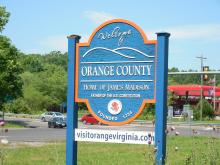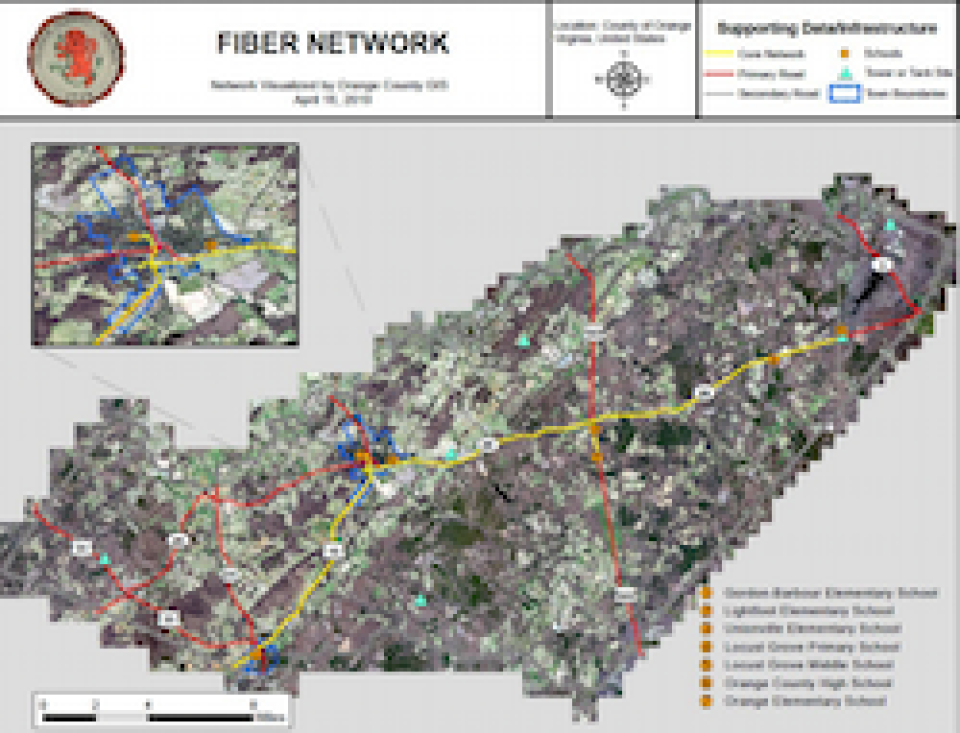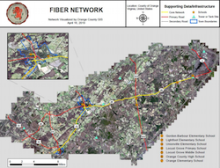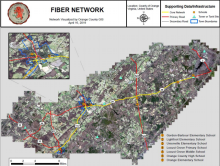
Fast, affordable Internet access for all.

Patience and persistence can be used to describe what made northern Virginia’s Orange County Broadband Authority successful in turning their middle-mile network into a Fiber-to-the-Home (FTTH) network. While the journey started more than five years ago, today the authority is connecting 20 customers a day with the goal of connecting 4,000 customers by the end of the calendar year.
Crews will be connecting users to the county-owned FTTH network, FiberLync, in three phases, each requiring between 10-12 months to complete. Phase 1 will pass approximately 4,000 households, phase 2 about 2,500 households, and phase 3 about 1,000.
The funding for these phases will primarily come from bonds set aside as part of the county’s capital improvement plan and will cover up to $15.5 million of the projects’ costs. The bonds will be paid back through FiberLync revenue.
Years in the Making
Bringing FTTH connectivity to the residents of Orange County (pop. 36,000) has been a goal since the Orange County Broadband Authority was created in 2016. The major driver for the authority was addressing the lack of broadband in the rural parts of the county. Residents in certain parts of the county have long been left with speeds under the FCC’s broadband definition of 25/3 Mbps (Megabits per second), and others have been entirely unconnected.
In 2017, the county worked with Orange County Public Schools to build the middle-mile network connecting district facilities as well as critical county facilities using E-rate federal funds. More than $1.1 million in E-rate funds were used to help connect the schools, accounting for 80 percent of the total project cost. The county and Orange County Public Schools shared the remaining costs of deploying extra capacity for future use.
The buried fiber ran 38 miles along Routes 15 and 20. 
The project was finished just before the 2018 school year, and the difference in reliability and speed was stark. The connectivity speeds to anchor institutions offered by the former private ISP hovered at 300 Mbps, but when the county’s network went live, residents had access to speeds of up to 10 Gbps (Gigabits per second download).
The county also used the new fiber to increase reliability in its public safety communication system by connecting the fiber to towers that also served as a host for fixed wireless providers and cellular telephone providers. (Larger image of map below.)
And in an effort to strengthen connectivity and resiliency, the authority partnered with the Rappahannock Electric Cooperative in 2019 and leased 19 miles of REC’s new fiber utility network to complete the county's fiber loop.
Ultimately, the plan was to leverage the towers, the loop completion, and the network the county built in partnership with the schools to bring high-speed, reliable Internet access to all residents in the county. The hope was that a private ISP would build out the FTTH connections and take on the mission of bringing accessible broadband to the county’s residents and businesses. But for several years, there were only crickets.
“The investment to do that in the rural areas just didn’t attract any of the players that were capable of doing it,” Jim White, Chairman of the Orange County Broadband Authority told ILSR in an interview.
White said those who were capable weren’t interested and those who were interested didn’t have the resources.
“It came down to an argument that said, ‘Well, we’ve waited 20 years for somebody to serve the citizens in the rural areas of the county, and it doesn’t seem like anybody is going to do it, so let’s see if we can [do it ourselves.]’ It really was the path of last resort.”
In May 2020, White and the rest of the broadband authority board members made the decision to make FiberLync an ISP and initiate a FTTH project that would cover the 355 square miles that make up Orange County.
Increasing Quality of Life
FiberLync started beta testing in February 2021, set rates in early April, and began connecting members by mid-April. Like other communities during the pandemic, there was a shortage in conduit and other supplies necessary to continue building out phases 1, 2 and 3. However, White said, FiberLync is on track to connect 4,000 customers by the end of 2021.
The ISP will b
White said they hope it will not only help with economic development, but an overall better quality of life in the county. With the county situated between Washington, D.C. and Richmond, Virginia, many residents are saddled with significant commutes. However, having high-speed, reliable Internet service will allow for more residents to work from home and for businesses to grow and create jobs in the county.
White frames the success of the county creating its own ISP around the backbone and the public safety towers the county invested in four years ago.
“We were really able to leverage off of those two large capital projects and that gave us a leg up in terms of infrastructure,” he said. “That middle mile was so critical to even having the option of becoming an ISP.”
Pandemic
As the pandemic prompted more states to go into lockdown, the need to give Orange County residents the option to work from home became even more apparent.
“We were already underway, but it just shined a brighter light on the lack of capability as well as it increased the urgency of moving forward.”
Like many other communities, the county was able to use CARES Act funding to answer some of the more immediate needs. They used funds totaling $2 million to set up 13 hotspots around the county, at fire stations, libraries and churches over the course of 40 days. It was an incredible help to the community, White said, as some of the hotspots offered better service than the options at residents' homes with some speed tests showing 100 to 300 Mbps download.
Even though the hotspots offered a great option in an emergency, the county was still focused on providing FiberLync as a long term solution to getting fast, reliable Internet into homes and businesses throughout the area.
Read more about other communities who have successfully leveraged their middle-mile networks into FTTH and communities who faced challenges with their networks here.
Orange County image via Flickr courtesy of Jimmy Emerson, DVM CC BY-NC-ND 2.0
Inline image from OCBA website


